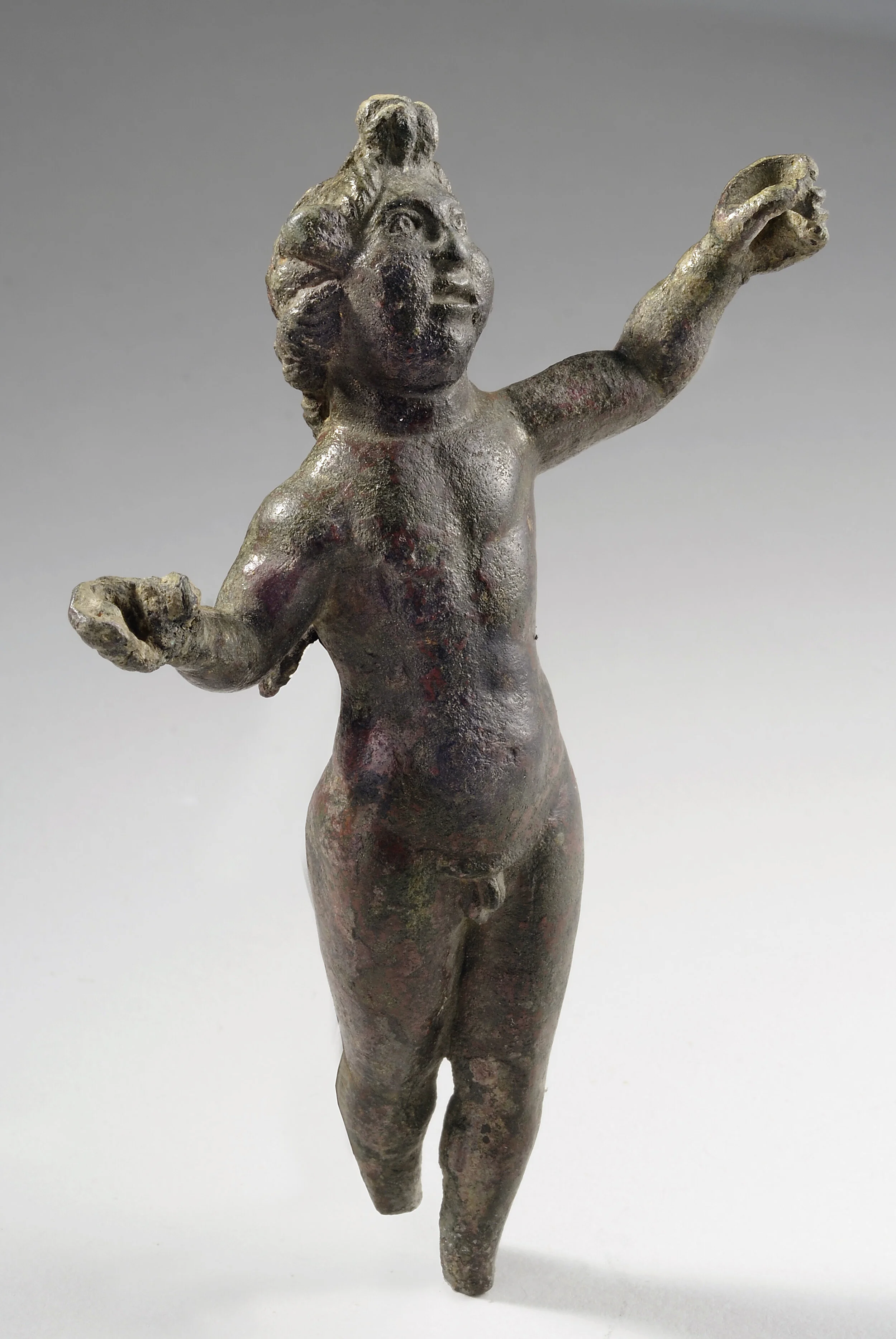Ancient Roman Gold Ring with Agate Intaglio of a Mouse





Ancient Roman Gold Ring with Agate Intaglio of a Mouse
Roman, 1st – 3rd century A.D.
Gold, agate
D: 2.8 cm (D: 1.10 in)
US Size 8.5
Serial: 19039
Provenance: Ex- Ervika Foundation collection
This charming and delicate Roman intaglio depicts a small mouse in profile, with its back furtively arched and its forelegs drawn close to its head. The engraving is skillfully executed on the tiny surface of an agate gem carved into a cone. This unusual shape displays three strata of color layers within the gem – blue at the bottom, white in the middle, and the frequently used red at the top. The stone is set in a wide gold hoop, with large, angled shoulders and a round bezel.
In popular Roman thought, the mouse was associated with the earth and especially the soil. Seen as an embodiment of plague and crop devastation, the mouse was used by ancient Greeks and Romans as a symbol to ward off agricultural failure. The Romans in particular had many distinctive opinions about the mouse, and the nature of this diminutive animal occupied the attentions of many significant Roman authors of the 1st and 2nd centuries A. D., including Virgil, Cicero, Horace, Pliny, Seneca, Livy, and Martial. For the Romans, as for the Greeks, the mouse was a prodigious and at times even foreboding animal, often appearing as a feature in Roman omens and auguries. A report about mice eating gold in a temple, for instance, was sufficient to suspend Roman military operations during the 2nd Punic War in 208 B. C. Other writers, of course, mocked popular superstition about mice, as when Cicero wryly wondered whether he should worry for his future because a mouse had nibbled his copy of Plato’s Republic. Another jocular ancient response to the potent popular symbolism of the mouse is seen in the name used by Roman soldiers to for their tremendous battering ram: the musculus, or “little mouse.” The cutely comic mouse appears in humorous Latin poetry, and seems also to have furnished Roman men with a term of endearment for their ladies.
The category of intaglio mouse rings forms a popular and amusing class within known Roman engraved gems. The mouse may be depicted on a table nibbling household foods, or else triumphantly perched on a cup or jug. Our ring is symbolic, rather than anecdotal, and would have been fitting as a personal seal.
CONDITION: Complete; a few tiny scratches and dents.
BIBLIOGRAPHY
ADAMS D.N. et al., When Orpheus Sang, An Ancient Bestiary, Paris, 2004, pp. 196-199, nos. 205-208.
KOZLOFF A.P. ed., Tierbilder aus vier Jahrtausende, Antiken der Sammlung Mildenberg, Mainz am Rhein, 1983, pp. 175-176, nos. 170-172.
LIPPOLD G., Gemmen und Kameen des Altertums und der Neuzeit, Stuttgart, s.d., pl. 93, nos. 9 et 11, p. 182.
MARSHALL F.H., Catalogue of the Finger Rings, Greek, Etruscan and Roman, in The Departments of Antiquities, British Museum, Londres, 1907, nos. 200-201, pl. V; no. 525, pl. XV ; n. 1174, pl. XXIX.
McDONOUGH C., Ridiculus Mus: Of Mice and Men in Roman Thought, in WALDAU P., KIMBERLEY C. P.,
A Communion of Subjects: animals in religion, science, and ethics, Columbia University Press, 2006.
WERNESS H. B., ed., The Continuum Encyclopedia of Animal Symbolism in Art. Continuum Internal
Publishing Group, 2004. 284-5.







